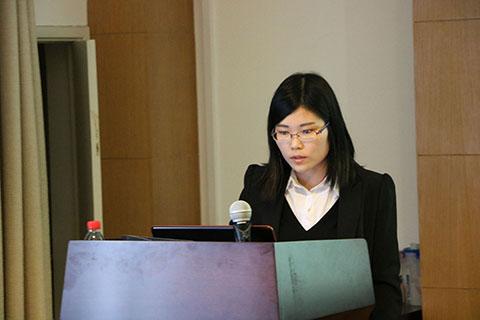Yinping Wang, PhD student at IMRCP, has defended her thesis on anisotropic growth of ZnO

Yinping carried out her research between the IDeAS team at the IMRCP laboratory and LCC.
On 27th June, she defended her thesis entitled: The studies of anisotropic growth of ZnO based on the organometallic method and the kinetic study of a related gelification.
Nowadays, nanoscience is defined as the studies of structures (molecules) and devices, in which at least one characteristic size is between 1 nm and 100 nm. These nanomaterials act as a bridge between bulk materials and atomic structures, and show many changes in the properties of physical, chemical or biological properties due to the reduction of the size of these structures. Nano materials composed of metal oxides are such kind of interesting materials. Their characteristics are very interesting for the development of electronic, optical, sensor and other applications.
For some metal oxides, oxygen deficit will produce vacancies, act as electron donors, and naturally induce the performance of n-type semiconductors. ZnO is a typical example. It is caracterised by a wide band gap of about 3.4 eV, high electron hole interaction energy (60 meV), high electron mobility, visible and near ultraviolet luminescence. These electronic characteristics make it a good candidate for the development of light source and detector. Recent studies have shown ZnO can emit in ultraviolet, violet, green, yellow and even red according to the preparation conditions. These optical properties of ZnO are closely related to the morphology of the material.
In a previous work, a synthetical method based on organometallic precursors and leading to ZnO nano-materials was developped. By changing different parameters (reaction medium, type of ligand, temperature, incubation time, etc.), ZnO nano-objects with different sizes and shapes can be obtained. However, the influence of the structure of the amine used as ligand was not clear. Therefore, this particular point was addressed in the first part of this work.
We use 2D-plot and statistical analysis to extract particle size information from TEM images. The analyzed data suggest that the anisotropic growth mechanism is realized firstly through the orientated attachment process, then finally hindered by a gelation process induced by the interaction between Zn precursor and amino ligand. ZnO nanoparticles was synthesized by using amines with the same aliphatic chain length but different structures (primary, secondary and tertiary amines). The interaction between these surfactants and metal precursors was revealed by complementary analysis of NMR and DFT. The results show that the morphology of ZnO nanoparticles varies with the amine structure. This is hypothetically due to large differences in the amine mobility on the ZnO surface. Indeed, the interaction of multiple H bonds of primary amines on the surface of ZnO leads to the decrease of the mobility of these amines relative to secondary amines.
This thesis work was also dealing with the gelation phenomenon which was discovered during the ZnO synthesis. The gel formation was related to the formation of oligomers. However, in order to better understand the driving force of gelation, we study the evolution of gel rheological properties over time for primary amines with different fatty chain lengths. The NMR results suggest that the intermolecular force (Van der Waals force, crosslinking) had a certain effect on the gelation rate, and explained the different gel initiation time. The longer the chain, the faster the gelation, as confirmed by rheological measurements.


